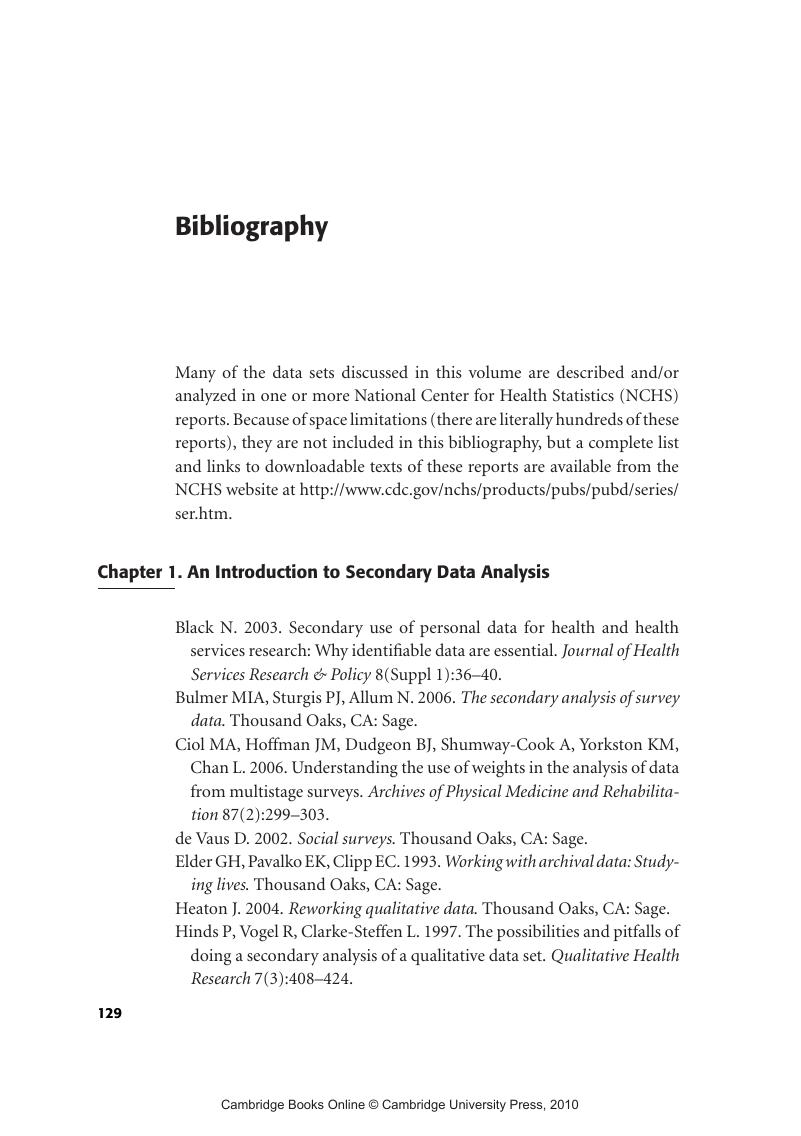Book contents
- Frontmatter
- Contents
- Preface
- Acknowledgments
- 1 An Introduction to Secondary Data Analysis
- 2 Health Services Utilization Data
- 3 Health Behaviors and Risk Factors Data
- 4 Data on Multiple Health Topics
- 5 Fertility and Mortality Data
- 6 Medicare and Medicaid Data
- 7 Other Sources of Data
- Appendix I Acronyms
- Appendix II Summary of Data Sets and Years Available
- Appendix III Data Import and Transfer
- Bibliography
- Index
- References
Bibliography
Published online by Cambridge University Press: 03 December 2009
- Frontmatter
- Contents
- Preface
- Acknowledgments
- 1 An Introduction to Secondary Data Analysis
- 2 Health Services Utilization Data
- 3 Health Behaviors and Risk Factors Data
- 4 Data on Multiple Health Topics
- 5 Fertility and Mortality Data
- 6 Medicare and Medicaid Data
- 7 Other Sources of Data
- Appendix I Acronyms
- Appendix II Summary of Data Sets and Years Available
- Appendix III Data Import and Transfer
- Bibliography
- Index
- References
Summary

- Type
- Chapter
- Information
- Secondary Data Sources for Public HealthA Practical Guide, pp. 129 - 136Publisher: Cambridge University PressPrint publication year: 2007

